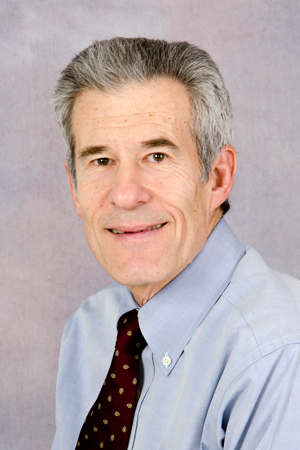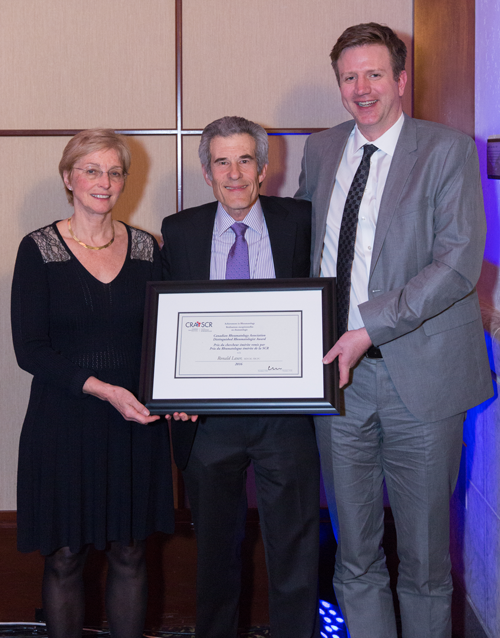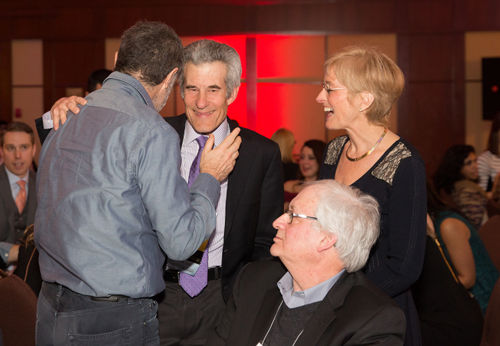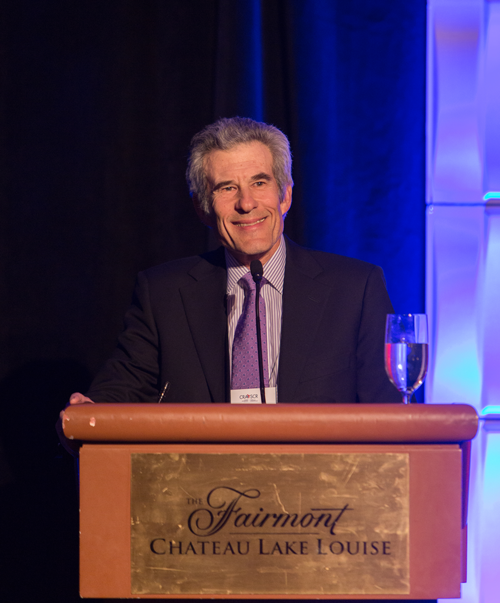Summer 2016 (Volume 26, Number 2)
Distinguished Rheumatologist:
Dr. Ronald Laxer
Download PDF

Why did you become a rheumatologist? What or who influenced you along the way to do so?
It was all due to a five-year-old boy named Arthur who I was assigned to care for as I was nearing the end of my first year of pediatric residency at the Montreal Children’s Hospital. He had systemic juvenile idiopathic arthritis (JIA) and was very sick. We did not have a rheumatologist on our staff and we all struggled to care for Arthur. I decided then that
I would become a pediatric rheumatologist and return to Montreal to provide excellent patient care. I went to Vancouver to pursue my fellowship training but was never offered a job in Montreal.
What is it about autoinflammatory disease that so captures your interest? What changes have you seen in the field since the beginnings of your research until now?
When I returned from administrative “purgatory” to full-time rheumatology in 2009 I wanted to tackle a new clinical challenge and decided to start a clinic for patients with autoinflammatory diseases. These disorders are especially interesting because—in most described so far—the biology makes clinical sense (i.e., a gene mutation alters the inflammatory response). For many, there are now effective treatments which can be life-altering. Our team has been part of gene discovery for four novel autoinflammatory diseases. With the ability to do next-generation sequencing more and more diseases will be discovered, pathways described and understood, and hopefully, treatments developed. Many old diseases—such as gout and recurrent pericarditis—are now considered to have a large autoinflammatory component, and treatment for the classic autoinflammatory diseases may be applicable to some of these more common diseases as well. I also love the clinical challenge of being able to actually make a diagnosis in patients with multi-system disease.
Sources close to us report that
you walk to and from work and are an avid Fitbit fan. Why is it so important that you get all those steps in daily?
We moved closer to the hospital and our children six years ago; my minimum 45 minute commute by car became a 15-20 minute commute. But I live a 16-minute walk to the subway so I began traveling by subway and eventually was able to get rid of one of our cars. On one sunny day I decided to walk home from work, and then came the idea of walking to work which I do daily (almost 8 kms). If I get out of work at a reasonable time (rare) I also walk home, which I do more often in the summer. I recognize the importance of exercise, which I really do not like to do, but I do love walking, especially with the many excellent podcasts that I listen to.

A poetic moment with Dr. Claire Bombardier, Dr. Ron Laxer, and Dr. Cory Baillie.
In 2009 you were the second Canadian to be awarded the Distinguished Clinician Scholar Award from
the American College of Rheumatology (ACR). In
your opinion, why is pediatric research so often overlooked? What did receiving this honour mean in terms of validating your pediatric focus?
Firstly, we are very few in numbers compared to our adult colleagues. Second, we are only now really maturing as a specialty. I think that being overlooked because we are pediatric rheumatologists is a thing of the past. Excellent work aligned with any of the academic pillars (creative, professional activity, research, teaching, and education) should be—and more recently has been—recognized, no matter where it is coming from.
In two sentences, what
happened with the Habs this season?
World’s best goalie
Devastating injury
Habs season destroyed
You have been heralded as the “driving force that launched, sustained, and encouraged the growth of the Division of Rheumatology” at the University of Toronto. What do you think about that distinction?
I am very proud of the Division but cannot take sole credit for its development. It began as part of the Division of Immunology under Dr. Erwin Gelfand. Dr. Len Stein had trained in pediatric rheumatology in Ann Arbor and came to Toronto to do research with Erwin. I joined Len in July of 1984 and Dr. Earl Silverman joined the two of us in November 1984.
Both Len and then Erwin departed over the next few years, allowing Earl and me to work together with Dr. Abe Shore, a fully trained pediatric rheumatologist who was also on the SickKids hospital staff. We formed a separate division in 1990. Tragically, Abe died in 1991. We are now up to 10 staff rheumatologists, all of whom (besides
Earl and me) are graduates of our fellowship program, and two of whom, Dr. Rayfel Schneider and Dr. Brian Feldman, became my bosses as Division Heads. All have made great contributions, making the SickKids program one of the best pediatric rheumatology programs in the world.

Surrounded by friends and colleagues.
What was your first thought when you learned that you would receive this award?
I had an overwhelming emotional reaction, with feelings of both pride and humility. I felt proud of the progress that our team had made and that our specialty has made, and also that my efforts to help advance the field were being recognized by my peers. This award has been given to the giants of Canadian rheumatology and to be included among such an elite group is very
humbling.
What is the greatest professional challenge you have faced, and how did you address/overcome this challenge?
I spent more than six years as a hospital Vice-President overseeing a huge portfolio that included the entire medical staff. Directing areas where I had no experience (e.g., hospital laboratories, quality, and risk-management, among others) proved to be a huge challenge. Once I was able to recognize who in the different groups were the best people to provide leadership, I felt that the situation was under control. Recognizing talent, treating people with respect, providing strong oversight, intervening only when required, and allowing people to do what they were good at were some of the things that allowed me to succeed in the job.
We hear your memory is tremendous and a frequent source of amazement for your trainees. What has it meant to your career to have such a precise and detailed recollection? On the other hand, has there ever been a time when you wished you could just forget something?
I have been blessed (and perhaps cursed) with having a good memory. It has allowed me to quote from articles that I read in the distant past and to recall what happened to patients. I remember patients that I knew we should be able to diagnose but could not, and have brought some back many years later to confirm a suspected diagnosis. Are there things I would like to forget? You bet! Those years as a hospital Vice-President are some I would like to forget about! As time goes on, though, I am forgetting more and more.

From one great educator to another.
Over the course of your life, how many cities have you lived in and which was your favourite?
I have lived in Montreal, Vancouver, and Toronto. They are all favourite cities. I grew up, went to school, and trained in Montreal, a city with a joie de vivre like no other in Canada at that time. I got married there and
our first daughter was born there. I saw the Habs win
10 Stanley Cups, attended the opening game of the Montreal Expos, and saw many events at the Summer Olympics in 1976. I did my fellowship training in Vancouver which has the natural beauty of the mountains and the ocean. We made lifelong friends there whom we are still close with and our second daughter was born there. Toronto is now home, a vibrant, culturally diverse city that has afforded me incredible academic opportunities and was the city where our third daughter was born. We are staying put as we are not planning to have any more children!
Ronald M. Laxer, MDCM, FRCPC
Professor,
Departments of Pediatrics and Medicine,
University of Toronto
Staff Rheumatologist,
The Hospital for Sick Children
Toronto, Ontario |



